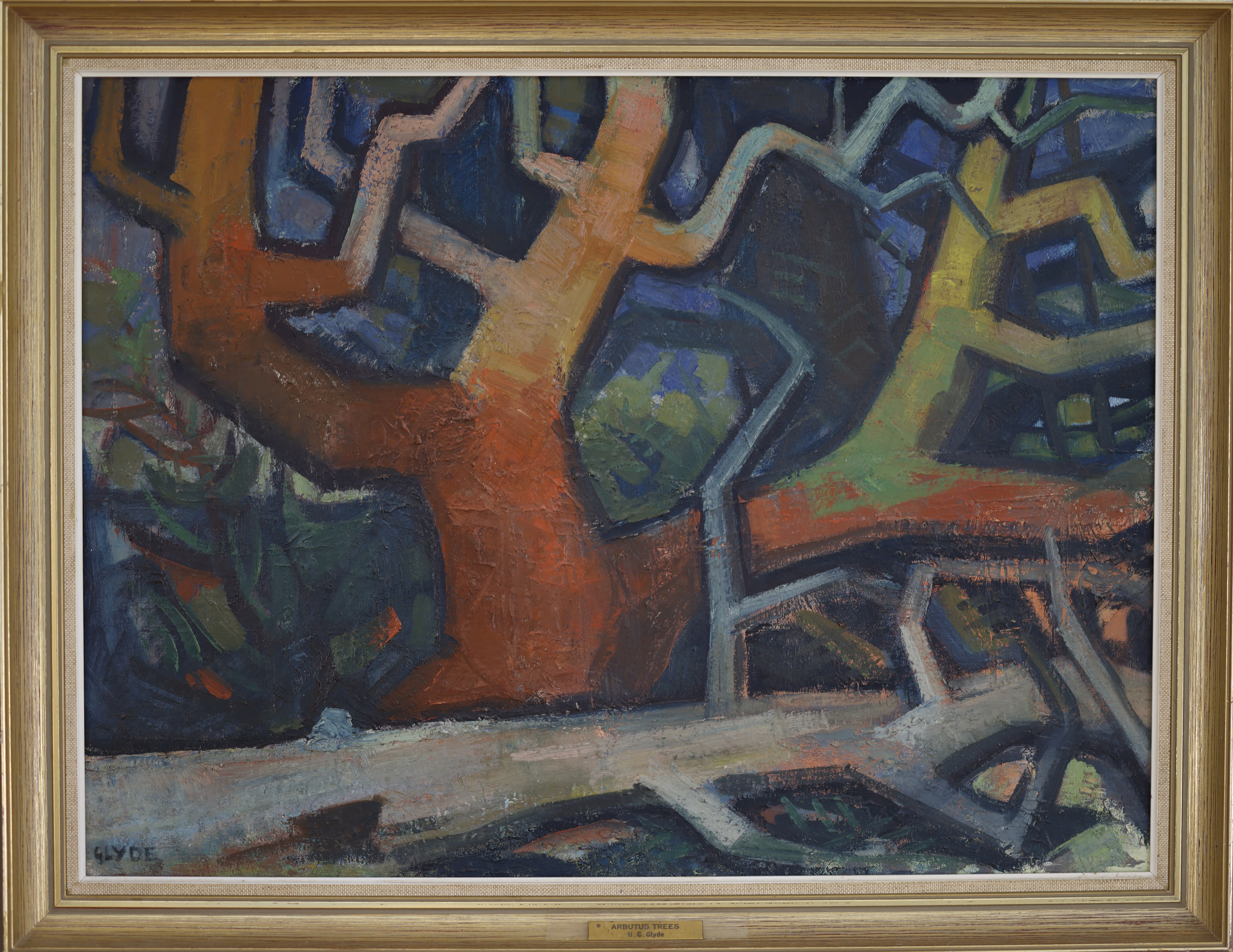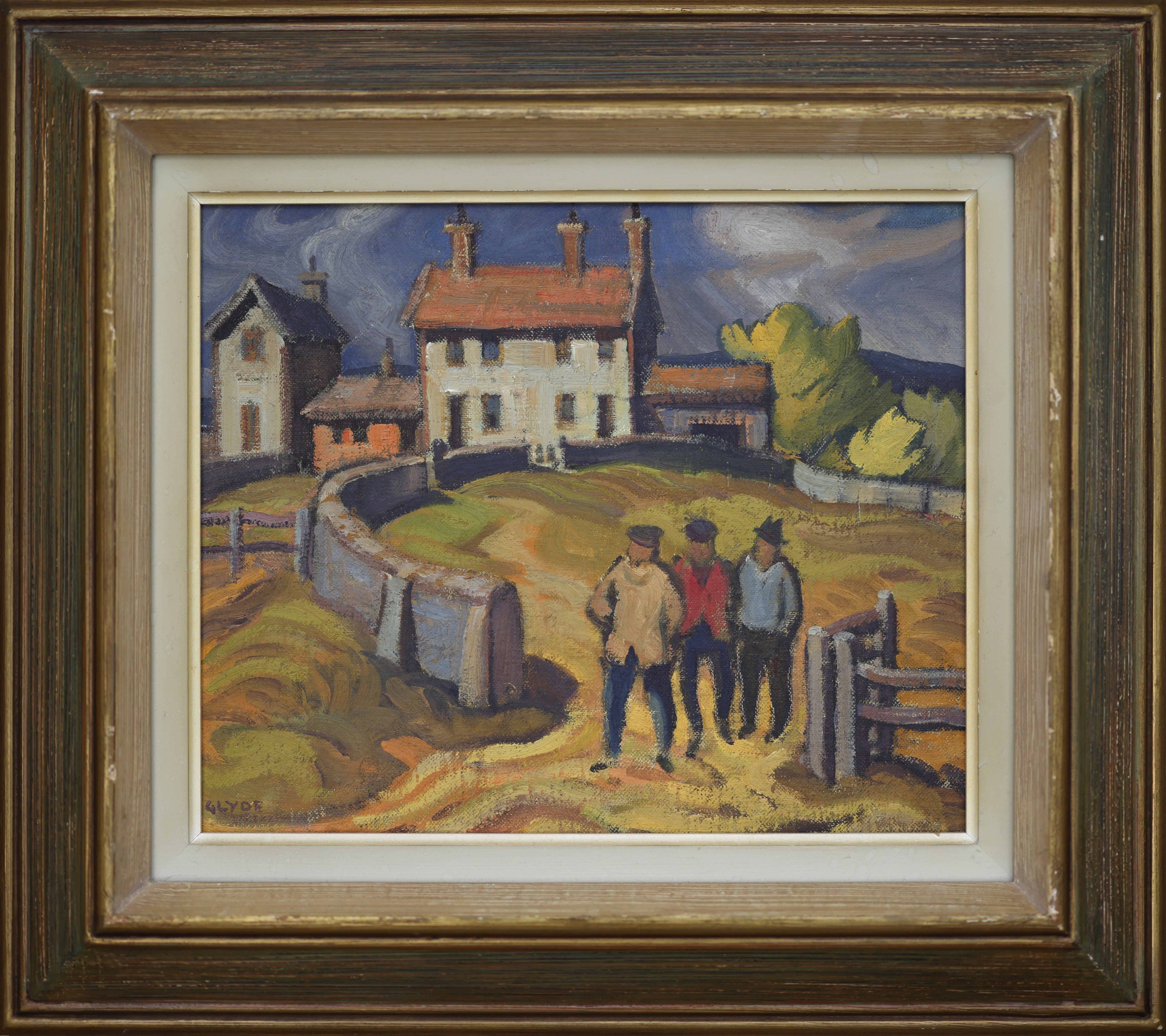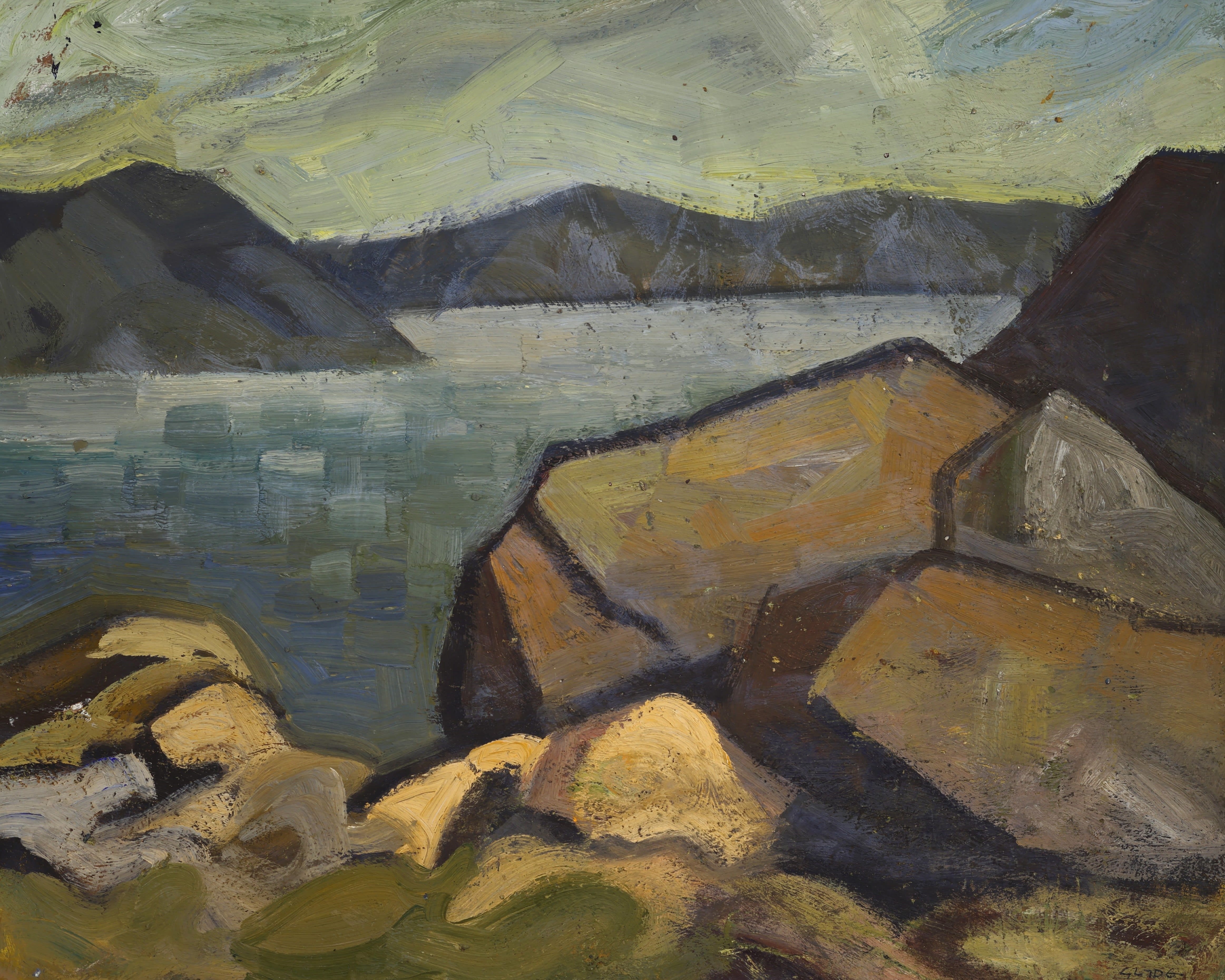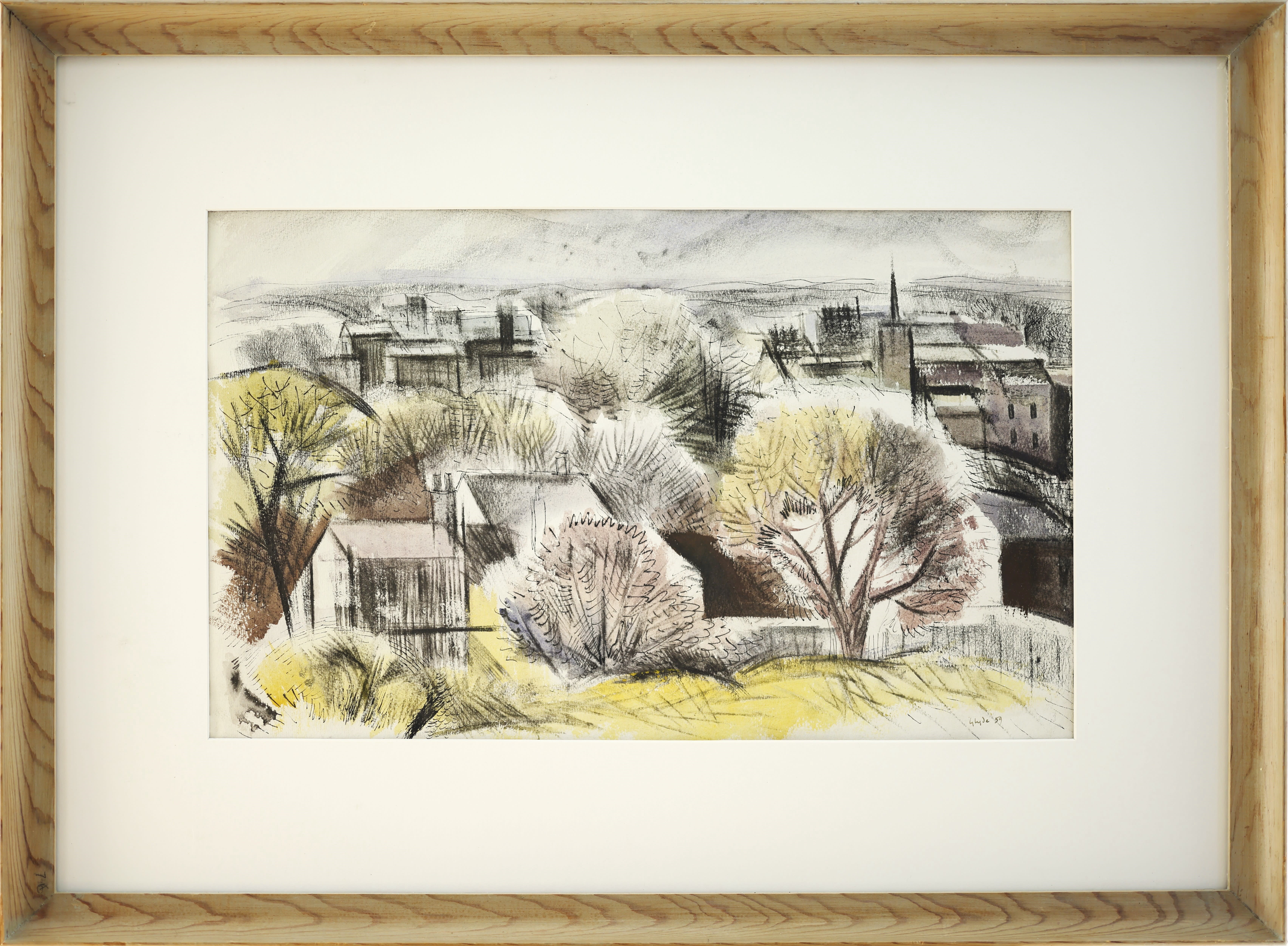
Henry George Glyde; Arbutus Tree
Early Life and Artistic Foundations
Born in 1906 in Luton, Bedfordshire, England, Glyde's artistic education began at the Brassey Institute in Hastings. It was here that he formed a lifelong association with Alfred Leighton. Glyde further honed his skills at the Royal College of Art in London, from where he graduated in 1930.

Henry Glyde; Old Houses, Fulking
Journey to Canada and Educational Impact
Invited by Alfred Leighton in 1935, Glyde moved to Canada, joining the Provincial Institute of Technology and Art in Calgary as a drawing instructor. This marked the beginning of Glyde's significant impact on art education in Alberta.
Between 1936 and 1945, Glyde, alongside notable artists like Walter J. Phillips, introduced community art courses across Alberta. These initiatives broadened the reach of art education, nurturing local talent in rural communities.

Henry Glyde; Otter Bay, BC
From 1936 until 1967, Glyde dedicated himself to teaching at the Banff School of Fine Arts, further cementing his role as an educator and mentor to generations of artists.
Artistic Endeavours and Recognition
In 1943, Glyde, alongside A.Y. Jackson, was commissioned by the National Gallery to document the Alaska Highway's construction, enriching his portfolio with this historic project.
Succeeding Alfred Leighton in 1945 as president of the Alberta Society of Artists, Glyde's leadership roles expanded. By 1946, he established and led the Art Department at the University of Alberta, significantly influencing the province's artistic landscape.
Glyde's contributions were recognized with his election to the Royal Canadian Academy in 1949 and a senior fellowship from the Canada Council for the Arts in 1958.

Henry Glyde; Near St. Albans
Legacy and Final Years
Glyde retired to Pender Island in 1966, continuing his artistic pursuits. In 1982, the University of Alberta awarded him an honorary doctorate, acknowledging his vast contributions to art and education.
Henry Glyde passed away in Victoria at 91, leaving behind a legacy immortalized in institutions such as the National Gallery of Canada and the Glenbow Museum. His work, celebrated for its allegorical themes and unique stylistic approach, remains a testament to his profound connection with Western Canada's landscapes and culture.
Conclusion
Henry George Glyde's life and work resonate deeply within the realms of Canadian art and education. Through his teaching, leadership, and artistic creation, Glyde played a pivotal role in shaping the artistic identity of Alberta and the broader Canadian art scene, ensuring his enduring legacy as a foundational figure in Western Canada's cultural history.











